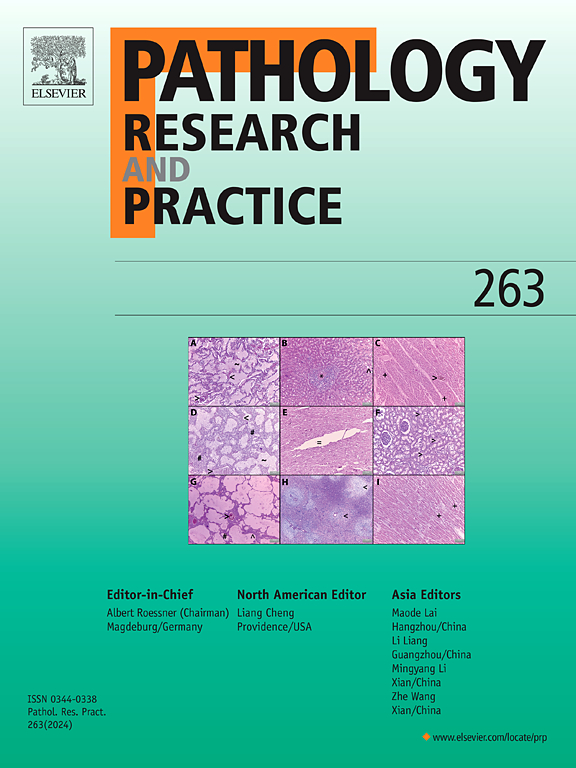Investigation of the effects of small VCP-interacting protein (SVIP)on the migration and invasion of breast cancer cells
IF 2.9
4区 医学
Q2 PATHOLOGY
引用次数: 0
Abstract
Endoplasmic reticulum-associated protein degradation(ERAD) eliminates misfolded proteins. Although there are many proteins involved in ERAD, we focused on small VCP-interacting protein (SVIP). The study aimed to investigate the expression of SVIP in breast cancer types and to determine whether SVIP contributes to the migration and invasion of breast cancer cells. Normal (MCF −10A), estrogen-positive (MCF-7), and triple-negative (MDA-MB-231) breast cancer cell lines were used in this study. Cellular localization of SVIP in breast cancer cells was examined by immunocytochemistry Western blot analysis was used to evaluate protein expression after SVIP siRNA transfection. RTCA identified the consequences of this suppression on cell invasion and migration. The immunoexpression of SVIP was observed in the cytoplasm of MCF-10A, MCF-7, and MDA-MB-231. The transfection of cells with SVIP siRNA led to a reduction in the protein expression of SVIP. SVIPsi RNA suppression results in decreased invasion and migration of MCF −10A. MDA-MB 231 cells' index of invasion and migration increased, and MCF- 7 cell index increased in the invasion but decreased in the migration as a result of SVIP siRNA suppression. In conclusion, SVIPsi transfection of the three cell types altered the ability of migration and invasion of breast cancer cells.
求助全文
约1分钟内获得全文
求助全文
来源期刊
CiteScore
5.00
自引率
3.60%
发文量
405
审稿时长
24 days
期刊介绍:
Pathology, Research and Practice provides accessible coverage of the most recent developments across the entire field of pathology: Reviews focus on recent progress in pathology, while Comments look at interesting current problems and at hypotheses for future developments in pathology. Original Papers present novel findings on all aspects of general, anatomic and molecular pathology. Rapid Communications inform readers on preliminary findings that may be relevant for further studies and need to be communicated quickly. Teaching Cases look at new aspects or special diagnostic problems of diseases and at case reports relevant for the pathologist''s practice.

 求助内容:
求助内容: 应助结果提醒方式:
应助结果提醒方式:


